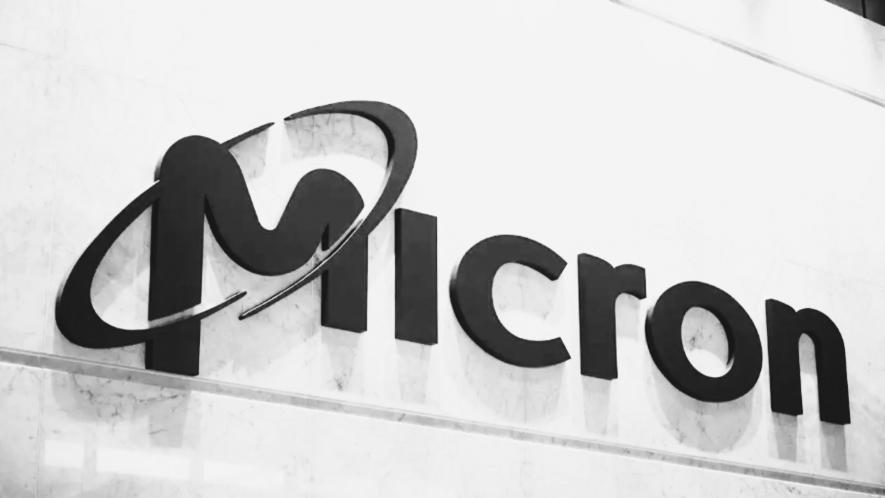If Chip-making is India’s Goal, Micron Deal Won’t Deliver it

The deal with Micron Technologies, struck during Prime Minister Narendra Modi’s visit to the United States, has made headlines as a major technological breakthrough and a new dawn for India’s electronic chip-making industry. Implicit in the hurrahs is that India has already missed the bus on key chip-making technologies. Those who know technology realise this deal is only for packaging chips. The new plant will assemble and test chips, tasks that fall on the relatively lower end of the electronics industry. The deal does not touch the core of chip-making technology, which is to design and fabricate chips, let alone the holy grail of manufacturing the lithographic machines that are central to chip fabrication.
India-United States ties hit a rocky patch when India refused to sanction Russia or align with the West and the G-7 on a “rules-based international order”—in which the West makes all the rules. But as Modi and United States President Joe Biden face possibly difficult elections soon, they urgently needed a reset in ties. For India, a reset would mean getting technology for critical sectors and declaring a new dawn! And for Biden, India is part of ongoing de-risking and long-term disengaging of its industries and market from China.
Late though it already is, the Modi dispensation is finally beginning to understand that technology is not something you can buy from the global market, even if you have the money. Electronics drives everything: from battlefields to artificial intelligence, from lowly washing machines to the most expensive fighter plane. Chips worth a few dollars are at the core of cheap drones and the most expensive aircraft and missiles used in the Ukraine war. Tanks and artillery integrated with missiles and drones shape the modern battlefield, with radars and satellites providing real-time information to those running wars. Modern electronic chips are the “brains” of all this equipment and almost any other industry and device. But this technology is also a closely-held knowledge of companies and countries.
So, if India wants to retain autonomy in global affairs, it must start thinking about its electronics industry. The ability to make the latest generation of chips, if not today, then at least tomorrow, is at the heart of such the electronics industry. But India must start today, for it missed the chip-making bus when it decided not to rebuild the Semiconductor Complex in Mohali. That chip-making plant, a critical component of India’s electronics self-reliance, mysteriously burnt down in 1989.
Now, what is the Micron deal all about? Micron Technology is a major manufacturer of memory chips in the United States and among world leaders in the semiconductor industry. It would have the necessary credentials to set up a memory fabrication plant in India—unlike the proposed Vedanta-Foxconn fabrication plant which got plenty of fanfare but in which Foxconn has no experience in chip-making. But Micron is not offering a memory fabrication plant either. It is setting up a plant in Gujarat that will “assemble, package and test” the chips it fabricates in its plants located in the United States and China.
If chip-making is India’s goal, the Micron deal won’t deliver it. What we are getting—assembling and testing chips made elsewhere—is the lowest end of the chip-making technology. We are not competing with the United States, China, South Korea, or Japan on chip-making but with, for example, Malaysia, which is already streets ahead of us in this sector. About 13% of the world’s OSAT outsourcing market is in Malaysia.
Shifting the low end of the chip production process to Malaysia and India would help the de-risking strategy of United States companies. But new high-end chip fabrication—such as Micron’s $100 billion mega-fab in Clay, Washington—would be encouraged within the United States.
Next, consider the investments involved in setting up a Micron unit in India and who is footing the bill. The total cost is an estimated $2.75 billion, with the central government providing a 50% subsidy and the Gujarat state government throwing in another 20%. Micron is investing only 30% of the total capital! In other words, Micron will hold 100% ownership of a plant that costs $2.75 billion after having invested only $0.825 billion.
Even industry reports—for example, eeNews Europe—called this an “extreme level of subsidy”. In other words, India is “subsiding” a leading United States manufacturer for a low-level technology deal to assemble and test its chips built-in high-end plants in the United States and China.
India is not the only country providing subsidies for technology and setting up plants. The United States government has a $52 billion kitty to subsidise chip manufacturing and other core activities. China has a National Fund and what is popularly called the Big Fund (National Integrated Circuits Industry Development Investment Fund), which is investing $73 billion in the local chip-making industry. But China and the United States are funding the high end of the electronics tech stack—advanced chip-making, devices, CAD tools, lithographic machines, etc. Virtually nothing (only about 5%) will go into chip assembly and testing. According to the South China Morning Post, quoted by Yahoo Finance, China gave $1.75 billion in subsidies to 190 Chinese firms, of which its leading chip fabricator, SMIC, got roughly 20%.
There is no question India must ramp up its ambitions and bootstrap a chip-making industry even though it missed the first bus. To succeed, it needs a plan on where, how much, and when to invest. Yes, it has to return to old-fashioned planning, which BJP-RSS ideologues dismiss as “socialism”. Every country plans its science and technology, including how to develop people, the key to technology development. One-off shots driven by which companies come and what they offer cannot drive this effort. What we need, and our roadmap to get there, must drive this work.
The Micron deal with India is a part of the public relations exercise by the Prime Minister’s team to burnish Modi’s image, tarnished by the BJP’s loss in the Karnataka election and the continuing riots in Manipur. Put simply, paying 70% of the cost while providing land and cheap labour so that a United States company can own 100% of a plant in a segment where other countries are streets ahead of us is not “investing in technology”. It is simply a PR exercise.
Get the latest reports & analysis with people's perspective on Protests, movements & deep analytical videos, discussions of the current affairs in your Telegram app. Subscribe to NewsClick's Telegram channel & get Real-Time updates on stories, as they get published on our website.
























